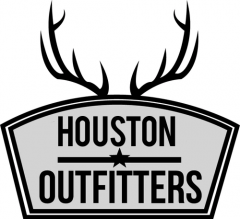Determining the Right Caliber and Round When Buying a Rifle
There are hundreds of models of rifle available to hunters. The key is finding the caliber and cartridge that work best for the game and terrain you hunt.
Like fly rods, shotguns, or just about anything, the key to finding the right one for your needs is to ask some basic questions about how it will be used.
Matching Rifle to Type of Game Hunted
The starting point for determining the best rifle is to consider the game to be pursued. A rifle for rabbits or coyotes will be very different than a rifle for moose or mountain sheep. A rifle that is too powerful for a given animal will result in unnecessary recoil and loss of meat. A rifle that is not powerful enough to dispatch the animal quickly in normal hunting conditions and ranges is unethical and often illegal.
Rifle Calibers and What Those Numbers Mean
After deciding on the game to be pursued, the next step is to pick a caliber, which is the approximate diameter of the bullet expressed in inches or millimeters. There are numerous rifle calibers available, from “varmint” calibers like the .17 and .223 used for coyotes and prairie dogs, all the way up to the large rounds used for Africa’s dangerous game, such as the .375 and .458. Among the most popular calibers for whitetail deer are the .308, .270, 7mm and .30.
When there are two numbers in the cartridge name, such as .30-06, only the first number refers to the caliber. The second number can refer to several things. With some, like the .30-06, the second number refers to the year the cartridge was first available – 1906. Sometimes it means a new “wildcat” round was developed using the cartridge from the existing round, as in the case of the .25-06 – a .25 caliber round based on the .30-06 cartridge. The second number can also refer to the grains of black powder used in the original round, as in the case of the venerable .30-30.
There can be several different specific types of ammunition for each caliber, and these will generally include the name of the manufacturer that developed them, such as the .300 Winchester Magnum and the .30-06 Springfield.
Choosing the Best Caliber for Shot Distance
Another important consideration in choosing a rifle is the terrain in which it will be used. If most shots will be taken at 100 yards or less, a slug gun or a rifle with a larger, slower bullet such as the .30-30 Winchester or .35 Remington works very well. If the rifle is to be used over longer distances, 200 to 300 yards, then fast, “flat-shooting” rounds such as the .243 Winchester for deer or the .22-250 Remington for varmints are good choices. Cartridges like the .30-06 and .308 are excellent all-purpose rounds for large game.
Other Considerations When Choosing a Rifle
Once a hunter has determined the type of game to be hunted, the appropriate caliber and round, and the typical shooting distance, the rest becomes largely a matter of personal preference.
Bolt action guns are the most popular, but other types such as lever action and pump action have their devotees as well.
A longer, heavier barrel is better for longer shots, whereas a short-barrelled “brush gun” like the .30-30 is great for getting off quick shots in the woods.
Some hunters prefer the look and feel of natural wood stocks, while others prefer synthetics, which are less affected by temperature and humidity.
If the hunter is sensitive to recoil, that should be a consideration when choosing a rifle. Caliber isn’t always an accurate indicator of how much a rifle “kicks”.
Price is often an issue, and there are usually several good choices at each price point.
A good hunting rifle, properly cared-for, will provide years of faithful service and enjoyment. In many cases, they become treasured family heirlooms handed down from generation to generation.
